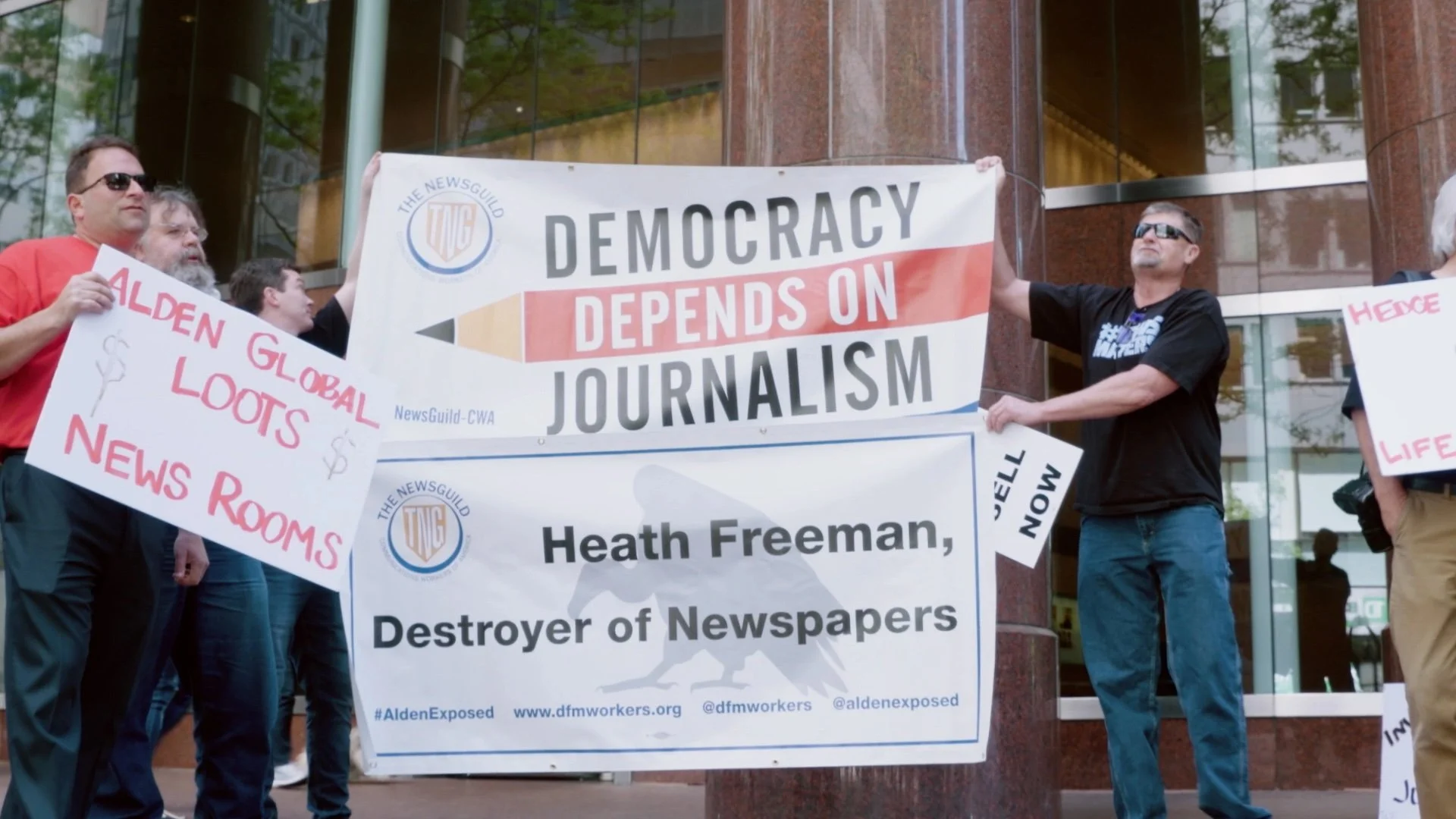“Stripped for Parts: American Journalism on the Brink”
Journalism has been teetering on a precipice for years. We live in a time where dissenting opinions can be called “fake news” and wholly ignored, yet truth and facts are more important than ever. Some of the most important journalistic work happening in the world is what is occurring at the community level. Rick Goldsmith’s Stripped for Parts: American Journalism on the Brink is a pulse check of where we are in the fight to keep the local presses running.
Stripped for Parts begins its story in Denver, Colorado, with a case study of The Denver Post. The paper was founded in 1892 and sold in 2010 to a hedge fund called Alden Global Capital. Stripped for Parts doesn’t ignore the fact that the way people consume information has changed and that newspapers bear the unfortunate brunt of this change, but the documentary digs deeper. One of the subjects says in the opening montage that “The Denver Post isn’t dying. The Denver Post is being murdered.” The documentary focuses on the work of Julie Reynolds. She noticed that local newspapers around the country were getting bought up by Alden Global Capital and wrote a series of articles examining their vulture-like business practices. Reynolds’ writing would unleash a tidal wave amongst her fellow journalists as they led the fight to save local news.
courtesy of Stripped for Parts: American Journalism on the Brink
Stripped for Parts is a dense piece of investigative journalism. It provides historical context to the relationship between local news and the fabric of our nation, while also chronicling Reynolds’ work and its widespread effects. Despite the depth of the topic, it never feels stifling or like too much of an information overload. Stripped for Parts is succinct and timely, exemplifying what it’s so desperately working to save. Journalism is essential to the health of a community. Without journalists, who is making sure the people in positions of power are staying honest? That’s what we lose when these newspapers are bought up, drained, and left for dead. As the film says, entire counties are left without local news reporting. Even beyond the paper’s ability to keep powers in check, the lack of a local newspaper is another force that divides us. Where’s the source for goings-on in the community? How do we learn about changes to garbage collection, road closures, or events? Everyone’s social media algorithms are telling us different things that the desire for a tangible, printed source of information is even more essential than the heyday of print media. To have a source that is honest at the center of the world.
courtesy of Stripped for Parts: American Journalism on the Brink
One of the subjects in Stripped for Parts says that a newspaper is not a commodity, it’s a service. Like the United States Postal Service, there are services that need to operate, perhaps at a loss, for society to be functional. Plain and simple, Stripped for Parts says that we’re unequivocally worse when we don’t have working journalists. It’s true. There’s a distinct cost to losing journalists in all of our neighborhoods, to losing inquisitive people who see something odd and throw themselves into investigating it. The freedoms of journalists are codified in the Bill of Rights. That’s how enduring the legacy of this profession is. Stripped for Parts respects the role journalists play by letting them do what they do best — share information in an easy-to-understand manner so the public can be informed.
In times like these, when it feels as though we’ve been trudging through darkness for years, it’s common to believe that it would be so easy to leave it all. To pack up our belongings and leave America in the dust. Stripped for Parts: American Journalism on the Brink certainly gives the viewer enough to stress over, but like the journalists in the documentary, the best course of action for us is to stay. To work to expose and change the aspects of society that are hurting people and curve humanity’s path back toward goodness. Stripped for Parts takes the spirit of the investigative written word and turns it into a motion picture worth more than a few thousand words.
support your local film critic!
~
support your local film critic! ~
Beyond the Cinerama Dome is run by one perpetually tired film critic
and her anxious emotional support chihuahua named Frankie.
Your kind donation means Frankie doesn’t need to get a job…yet.
Follow me on BlueSky, Instagram, Letterboxd, YouTube, & Facebook. Check out Movies with My Dad, a new podcast recorded on the car ride home from the movies.


